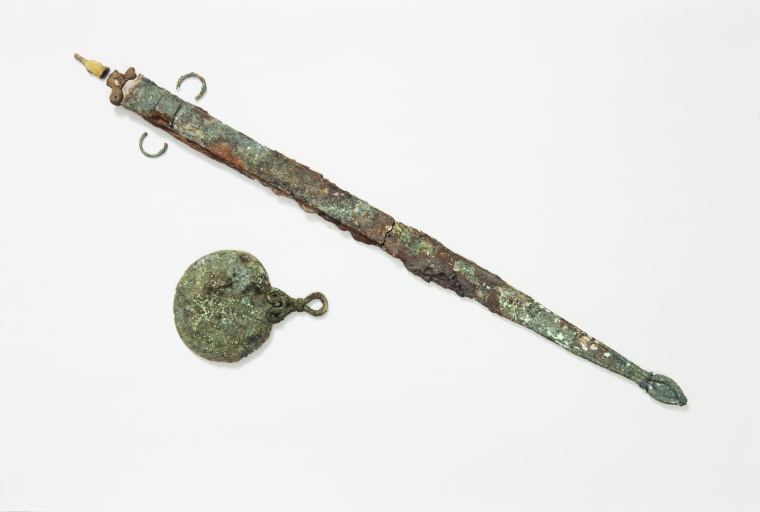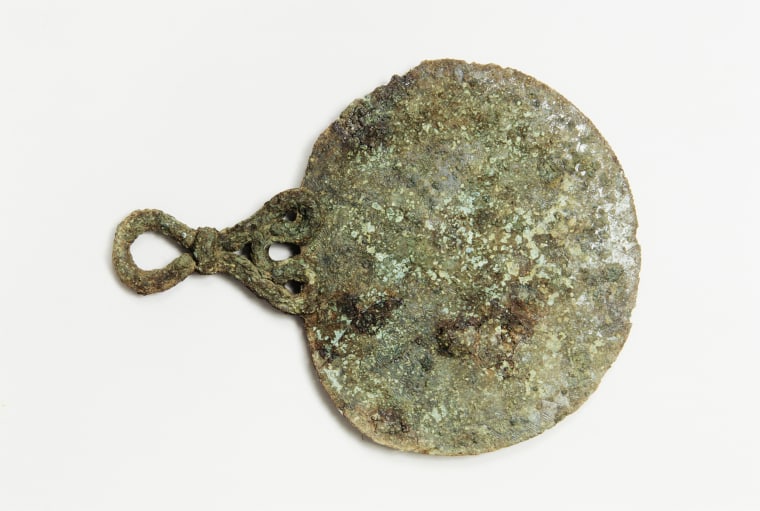A mysterious 2,000-year-old Iron Age warrior was female, a new study shows
The grave, which offers a rare glimpse into ancient British life, suggests women may have taken an active part in military raids.
LONDON — Experts puzzling over the buried remains of an ancient warrior found in a 2,000-year-old grave off the coast of Britain have concluded the person was female.
Mystery has surrounded the Iron Age figure interred on Bryher, one of the Scilly Isles southwest of mainland Britain, since it was discovered in 1999. The grave contained a sword and a shield, items traditionally associated with male burials, as well as a mirror, which was typically buried alongside women.
Tooth enamel indicated with a 96% probability that the person was female, according to a study published Thursday in the Journal of Archaeological Science: Reports.
The grave, which is dated from 100 B.C. to 50 B.C., offers a rare glimpse into ancient British life and suggests that women may have taken an active part in military raids before the tribal warrior queen Boudicca led a fierce uprising against the Roman colonization of Britain in A.D. 60.
“Our findings offer an exciting opportunity to re-interpret this important burial. They provide evidence of a leading role for a woman in warfare on Iron Age Scilly,” Sarah Stark, a human skeletal biologist at Historic England, which funded the study, said in a statement.
“Although we can never know completely about the symbolism of objects found in graves, the combination of a sword and a mirror suggests this woman had high status within her community and may have played a commanding role in local warfare, organizing or leading raids on rival groups.”

The body was so decomposed that DNA testing was inconclusive — only a dark outline of the skeleton in the soil was visible during the excavation. The new analysis was possible only because of pioneering biomolecular analysis techniques at the University of California.
“Tooth enamel is the hardest and most durable substance in the human body,” Glendon Parker, a professor of environmental toxicology at the University of California, Davis, said in a statement.
“It contains a protein with links to either the X or Y chromosome, which means it can be used to determine sex. This is useful because this protein survives well compared to DNA,” Parker said.
Other graves could be re-examined using the same process, he added.
Little is known of the Celtic people who lived in Britain before the Roman occupation, but archaeologists believe the main form of warfare was surprise attacks on enemy settlements.

Mirrors had both symbolic and practical value to warriors: They were used to signal to allies and coordinate attacks, as well as to communicate to the supernatural world, Historic England said.
The Bryher grave is the only one in Western Europe to have both a mirror and a shield. The items are on display at the Isles of Scilly Museum on the island of St. Mary’s.


Recent Comments